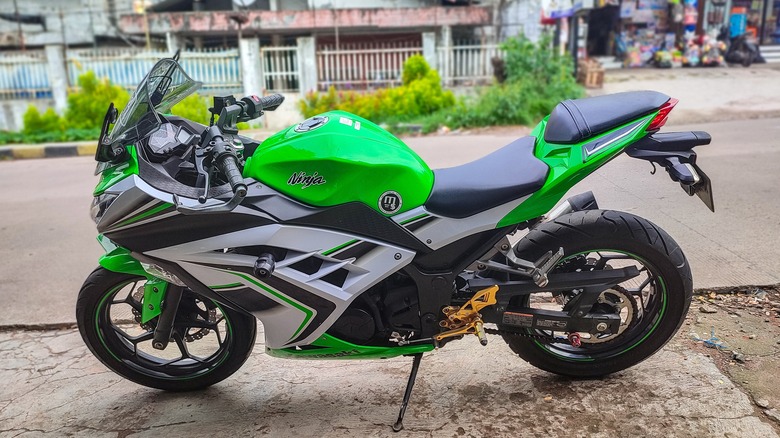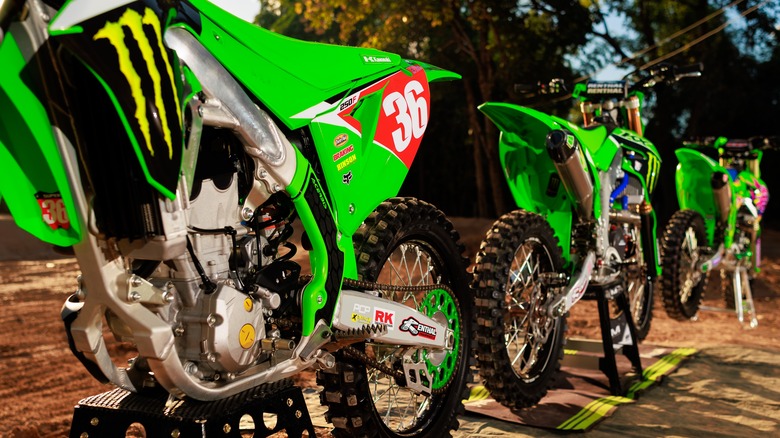Team Green: The Story Behind Kawasaki's Iconic Color Choice
For well over half a decade, Kawasaki has been a name to be reckoned with in the world of motorsports. The Japanese manufacturer's extensive lineup of powerful motorcycles is world famous, thanks to their high speed, ease of control, and overall reliable performance. The company itself is also well-known for breaking new ground with its motorcycles across its seasoned history, such as producing the first air-cooled vertical twin two-stroke engine for a street bike in 1967 with the Kawasaki A1 Samurai and being the first foreign motorcycle manufacturer to have open up a facility in the United States in 1974.
But one aspect of Kawasaki's history that doesn't get much mention is how the vibrant lime green color that has long characterized the brand came into being. It's an undeniably iconic part of their motorcycles that motorheads can't imagine Kawasaki being without nowadays. The distinct color has made their motorcycles immediately identifiable to everyone from seasoned riders to budget-conscious enthusiasts while further influencing the look of the company's many other vehicles, such as ATVs, electric bikes, and jet skis. So, just how did this instantly recognizable aspect of Kawasaki's identity come to be? Surprisingly, the color choice wasn't immediately met with open arms.
Green became the brand's lucky color
Kawaski motorcycles may be known today as mean green riding machines, but it initially didn't start off without some mild controversy. At the 1969 Daytona 200, the company left onlookers stunned by having its team of riders consisting of Dick Hammer, Art Bauman, Ken Araoka, Cal Rayborn, and Walt Fulton III and their fleet of 250cc A1RA and 350cc A7RA racers appear in a striking green and white color. Both racers and manufacturers such as Harley-Davidson alike have long remained superstitious when it came to the color, with many identifying green as unsafe.
Created by designer Chris Kurishima and painter Rollin "Molly" Sanders, Kawasaki's motivation for the daring color choice was to help their riders stand out from the competition, especially given that the event would also be debuting on television in full color. While Kawaski didn't win the 1969 event, the green coloring nevertheless succeeded at leaving an indelible impact that would go on to affect the company's branding soon after.
Many of their future motorcycles and race bikes went on to adopt the green color. The moniker "Green Meanies" began to become associated with Kawasaki motorcycles as the company saw continued victory at various racing events and championships. Over time, lime green evolved from a simple gimmick into a powerful statement of Kawasaki's never-ending quest to innovate and think outside the box, leaving all its competitors in the dust.

